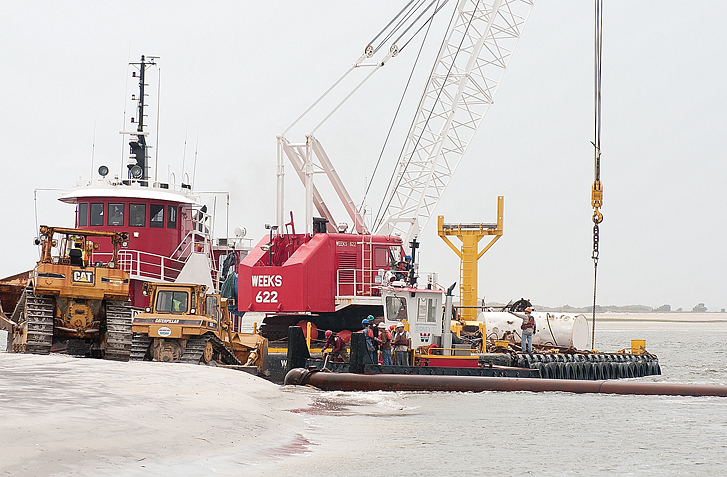With nearly 20 years remaining on a federally authorized 50-year program to keep its beaches wide with sand, Wrightsville Beach is in danger of bumping up against the lifetime federal spending cap. Officials are working to persuade the government to relax the limit to account for today’s costs.
First authorized in 1986, the program that pays for pumping sand onto Wrightsville Beach was intended to replenish the strand periodically through 2036. The lifetime cost was limited to no more than $36.3 million, but the actual cost of periodic sand replacement through 2036 is estimated at nearly $69.7 million, said town manager Tim Owens.
There is about $12 million left before hitting the authorized limit, said Layton Bedsole, shore protection coordinator for New Hanover County. With local matches, that is probably enough for two more scheduled sand replenishment cycles, in 2018 and 2022.
He, Owens, representatives of the county’s other two beach towns and a project manager from the Army Corps of Engineers met last week to discuss next steps. Wrightsville Beach is the only New Hanover County town that is nearing its lifetime allocation, Bedsole said.
Before Wrightsville Beach can make a case to Congress that its allotment should increase, the Corps must complete an updated cost-benefit analysis.
“We hope we can get that done prior to the 2018 renourishment cycle,” Owens said.
When Congress approved funding in 1986, the legislation estimated how much the periodic sand mitigation should cost over the life of the project. But 31 years have passed, and projects have become more expensive.
The main cost involves mobilization — bringing in a dredge or dredges, pipe and the people necessary to complete the project on time. Dredging usually must be done outside normal loggerhead sea turtle nesting season, and there are other issues that affect timing and availability.
As an example of how times have changed, Bedsole said the cost of mobilization for the upcoming beach renourishment project for Carolina Beach and Kure Beach is $3 million to $7 million, the difference being whether one or two dredges are used. In 1986, mobilization cost $250,000. While the legislation makes some allowances for inflation, it isn’t nearly enough to cover the actual cost today.
“Compared to $250,000, now you see why the estimates from 1986 are not really fair to the project in 2015,” Bedsole said.
The congressional delegation is aware of the problem and has signaled a willingness to work with the town to increase the limit, Bedsole said.
Even as they petition for an easing of the limit, local officials say they are fully aware of the movement within Congress and the federal government to cut or do away with beach renourishment funding. So far those efforts have been rebuffed, but county and municipal officials have been meeting to devise a Plan B should federal funding eventually disappear.
email [email protected].




